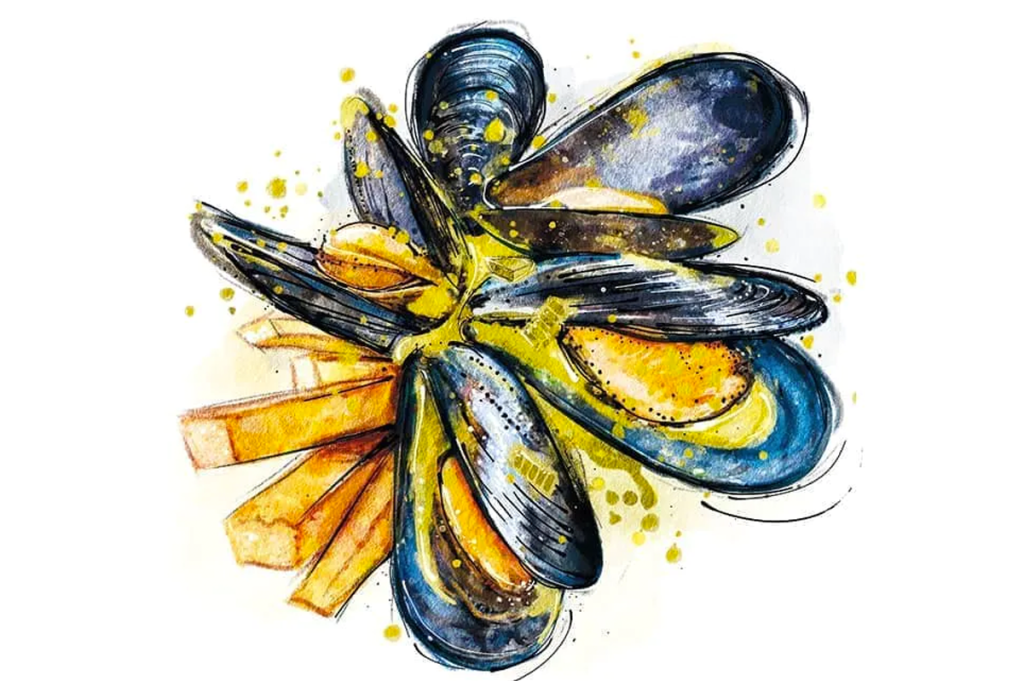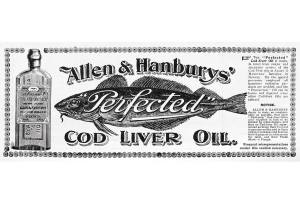Mussels were probably the first thing I ate as a child that I knew at the time was “an acquired taste.” They made me feel impossibly grown up, coming with a brigade of bowls, one for the mussels themselves, one for frites, one for bread, one for empty mussel shells and a little lemon-scented bowl of water to dip my fingers in. My dinner alone must have taken up half the table. From then on, I ordered mussels every time they were on the menu, knowing they would transform me from a gawky twelve-year-old girl wearing cargo pants into a veritable sophisticate. But I never once tried moules mouclade.
Like Socrates, Casanova and Beyoncé, mouclade is usually known only by its first name, la mouclade — the “moules” implied by the “mouclade.” The dish hails from the coastal town of La Rochelle, in the Poitou-Charentes region of western France, and the mouclade sauce is curried. Sometimes there is saffron alongside the curry powder.
While you can’t move for moules marinière in France, and it is still a mainstay of restaurants outside its home country, mouclade’s presence is limited both inside and outside France. When I mention to friends or family that I’m working on a mouclade recipe, they look nonplussed, and even my shellfish-loving father, who introduced me to mussels, draws a blank. Perhaps it’s the curry powder that has pushed it out of fashion, but it’s actually a very elegant dish, and here’s the truth: I think I prefer mouclade to the more famous marinière.
The initial preparation is very similar to marinière: the cleaned mussels are steamed in white wine until they open their shells and reveal their sherbet-orange flesh. The mussels are then drained, and the reserved wine and cooking liquor is used to make a creamy, spiced sauce that is then poured back over the mussels before serving. The sauce should be a little thicker than that of the more famous marinière: not as thick as what in Britain we consider chip-shop curry sauce, but enough to cling to the mussels, or to coat a chip swiped through it. The sauce itself can be made and thickened in all sorts of ways, but I think it is best done with a classic roux that is flavored with the curry powder and the water-soaked saffron, then lengthened with the liquor and finished with a little cream. The curry powder brings spice and a gentle heat, while the saffron ensures a beautiful, warm amber color and makes the whole thing aromatic and complex.
I’ve seen the dish referred to as being served with a saffron velouté which, while technically correct, feels like a slightly defensive and pretentious way to refer to mouclade — apart from anything else, it is the curry powder, not the saffron, which is the defining feature. But “velouté” literally translates as “velvety,” which does give you an idea of the delightful texture of this sauce: rich and light all at once, creamy but not overbearing.
Mussels are in season from October to March, so now is the perfect time to make this dish: it is warm and comforting, but it won’t have you bent over a stove for hours — and it still has the suggestion of summer holidays, so it will ease the transition into early fall. Some cooks de-shell the mussels before serving; some serve them on the half-shell. I do neither. Yes, it’s messy, but getting stuck in and a bit messy is part of the joy of eating mussels. And finally, there’s an old debate about whether mussels should be served with fries (frites, of course) or bread. It’s a debate that I’m happy to quickly settle — the correct answer is always: both.
Serves two | Takes 20 mins
- Small pinch saffron
- 2¼ lbs mussels
- 1 oz butter
- 2 shallots, finely dice
- 2 garlic cloves, minced
- 1 tbsp plain flour
- 2 tsp medium curry powder
- 6⅔ fl oz dry white wine
- 3⅓ fl oz double cream
- In a small cup, pour a couple of tablespoons of boiling water over the saffron, and set to one side to let it bloom. Rinse the mussels under running cold water: knock off any small mineral build-ups with the back of a knife, and remove the beards (the hairy bits that are attached to the shells) using your fingers, or by gently scraping with a knife
- Melt the butter in a medium-sized pan, and add the shallots and garlic. Cook until soft but not colored, and then stir the curry powder and flour into the mixture. Continue to cook for a couple of minutes, then add the saffron and its soaking water, before setting the roux to one side
- Put the mussels in a large cooking pot with a lid. Cover with the wine, place over a medium heat, and cook for five minutes, occasionally shuffling the pan, until the mussel shells have opened. Drain the mussels, reserving the cooking liquor; discard any still-closed mussels before returning the rest to the cooking pot and covering
- Add the reserved liquor to the saffron curry paste little by little, stirring all the time. Let it cook for five minutes, then add the cream, giving it a couple of minutes more on the hob. Now pour the sauce over the mussels, and either serve them in the cooking pot and let people help themselves, or spoon them into individual dishes
This article was originally published in The Spectator’s UK magazine. Subscribe to the World edition here.


















